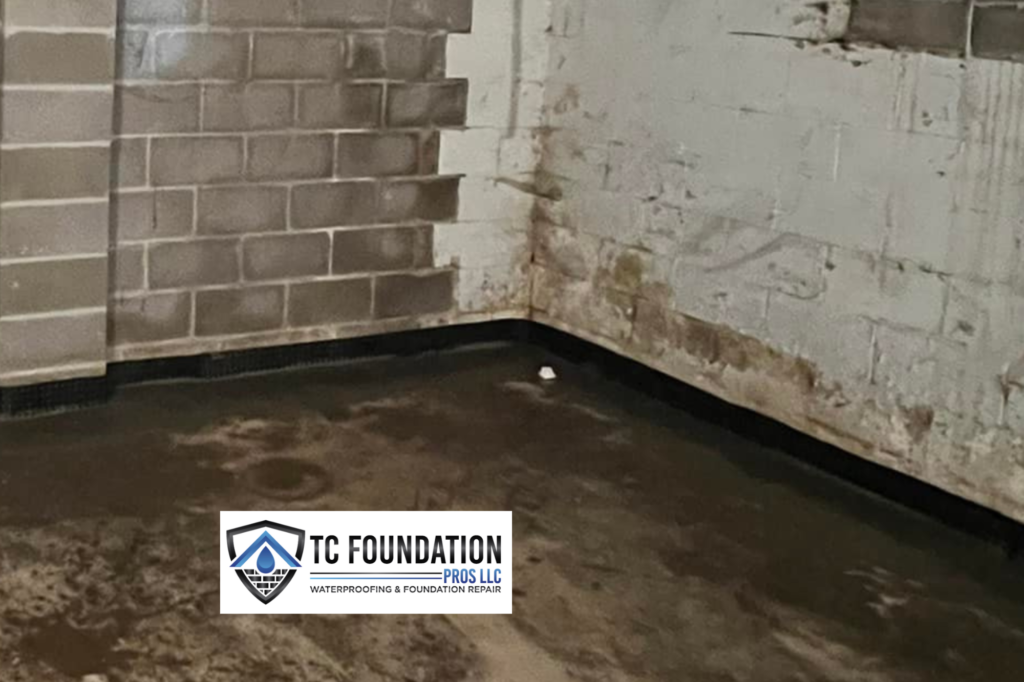Foundation cracks in your home can range from common vertical cracks, often due to settling that you can seal with epoxy, to serious horizontal cracks indicating structural instability, requiring professional repair. Other cracks, like stair-step ones, suggest uneven settling and need evaluation. Cracks can occur from varied causes such as soil movement, poor drainage, temperature fluctuations, tree roots, and inadequate construction. Ignoring them can weaken your home’s structural integrity, invite pests, cause moisture problems, and devalue your property. Knowing how to identify and fix these cracks is essential, offering you numerous ways to protect your home more efficiently.
Key Takeaways
- Foundation cracks can be vertical, horizontal, or diagonal, each indicating a different cause, such as soil movement or poor drainage.
- Ignoring foundation cracks can lead to structural instability, water damage, pest infestations, and decreased property value.
- Hairline and small vertical cracks can be repaired using epoxy or polyurethane sealants, while larger ones may require concrete patching.
- Horizontal and diagonal cracks, indicating potential instability, require professional repairs using methods like epoxy injections or underpinning with steel piers.
- Preventive measures include ensuring proper drainage, maintaining gutters, protecting from tree roots, having regular inspections, and controlling indoor humidity levels.
Understanding Foundation Cracks
While you may feel alarmed at the first sight of a crack in your home’s foundation, understanding the nature and cause of these cracks can help you take appropriate action.
There’s a range of foundation cracks, each with distinct characteristics and implications.
Vertical cracks, which are common and usually due to normal settling, can be sealed with epoxy injection. But if they widen, you’d better call a pro.
Horizontal cracks, on the other hand, are serious business. They indicate structural instability and require professional intervention.
Then, there are diagonal or stair-step cracks. These might be due to uneven settling and warrant a careful evaluation and potentially significant repairs.
Finally, foundation slab cracks appear on the floor. Small ones are common, but larger or uneven fractures suggest foundational movement.
In a nutshell, understanding these types of cracks is essential to maintaining your home’s health.
Don’t let fear rule you. Instead, equip yourself with knowledge and act wisely.
After all, monitoring and addressing these cracks early can save you a lot of hassle and money down the road.
Reasons Behind Foundation Cracks
Now that you have a firm understanding of different types of foundation cracks, it’s vital to recognize why these cracks occur in the first place. Several factors may cause them, and you must be aware of them to prevent further damage.
Firstly, soil movement can contribute to foundation cracks. Expansive clay soils that shrink and swell with changes in moisture can exert pressure on your foundation, resulting in cracks. Similarly, poor drainage that leads to water accumulation can weaken your foundation, making it susceptible to cracking.
Temperature fluctuations are another factor. Freeze-thaw cycles cause concrete to expand and contract, which can lead to cracks over time. Large tree roots near your home can also displace soil, causing your foundation to shift and crack.
Lastly, poor construction practices like inadequate concrete curing or faulty reinforcement can lead to early cracking.
Don’t overlook the simple fact that homes naturally settle over time, causing minor, non-structural cracks.
Understanding the reasons behind foundation cracks is key to maintaining your home’s integrity. So, look for these factors, mitigate them when possible, and seek professional help when necessary.
Types of Foundation Cracks
Understanding foundation cracks starts with identifying their types. They typically fall into four categories: hairline, vertical, horizontal, and diagonal cracks.
Hairline cracks are thin and often less than an inch long. They’re generally caused by the normal settling of your house, especially in new construction. Although they usually aren’t structurally serious, you should keep an eye on them. Use an epoxy injection for sealing and waterproofing, and consult a professional if they widen over time.
Vertical cracks are larger and can extend from the top to the bottom of your foundation. Tension forces cause them and can let water seep in. You’ll want to seal these with a waterproof epoxy and, if they grow, have a professional step in.
Horizontal cracks run side to side along your foundation wall. These are serious, indicating potential foundation wall failure due to lateral soil pressure. You’ll need professional repair for these, possibly involving steel reinforcements or wall anchors.
Diagonal cracks run at an angle or in a stair-step pattern along block or brick walls. They hint at uneven foundation settling and require professional evaluation. Fixes might involve injection sealing or foundation stabilization.
Don’t ignore these signs; your home’s stability depends on it.
Implications of Ignoring Cracks

Ignoring foundation cracks might seem like a cost-saving measure in the short term, but it can lead to severe consequences later on.
Left unchecked, these cracks can grow, weakening the structural integrity of your home. This can lead to sloping floors, bulging walls, and, in extreme cases, a total collapse of the structure.
But structural issues aren’t the only concern. Cracks can also provide an entry point for water.
Over time, this can lead to moisture problems, including mold and mildew growth, which can affect your home’s air quality and your family’s health. It can also invite pests like ants and rodents into your home.
Furthermore, ignoring cracks can greatly lower your property’s value. Potential buyers will likely be deterred by the likely costs and risks associated with foundation repairs.
Finally, the longer you wait, the more expensive the fix will be. Small cracks can often be repaired relatively cheaply, but if they’re allowed to grow, you’ll be looking at a much larger bill.
Methods for Repairing Cracks
Having recognized the potential dangers of ignoring foundation cracks, it’s clear that timely intervention is key to maintaining your home’s structural integrity and value.
Various methods can be employed to repair these cracks, depending on the severity and type of cracks present.
A do-it-yourself approach can be effective for hairline or small vertical cracks. Epoxy or polyurethane sealants can prevent water intrusion.
For significant foundation settlement issues, underpinning with steel piers or helical piers may be required. This method stabilizes and lifts the foundation, correcting the problem. When in doubt, professional foundation repair Pittsburgh contractors can assess and restore stability with the right tools and expertise.
Professional repairs are almost always necessary for horizontal or diagonal cracks, which often signal serious structural instability.
Professionals may use epoxy injections to fill and seal the cracks, or they may use carbon fiber straps or wall anchors to reinforce and stabilize the walls.
For significant foundation settlement issues, underpinning with steel piers or helical piers may be required. This method stabilizes and lifts the foundation, correcting the problem.
Preventive Measures for Foundation Cracks
While it’s important to address existing foundation cracks, taking preventive measures can save you from potential structural issues and costly repairs in the future.
Firstly, guarantee proper drainage around your home. Water should always be directed away from your foundation to prevent soil expansion and contraction that could cause cracks.
Regularly clean and maintain your gutters and downspouts, and regrade your yard if necessary.
Next, protect your foundation from tree roots. If you have large trees near your home, consider removing them or installing root barriers to prevent roots from reaching the foundation.
Regularly inspect your foundation. Look for early signs of cracking or movement. Hairline cracks are normal, but if they start to widen, it’s time to call a professional.
Finally, control indoor humidity levels. High humidity can lead to condensation on your foundation walls, which can weaken the concrete over time.
Use a dehumidifier, particularly in basements and crawl spaces. Many homeowners rely on trusted Pittsburgh foundation repair specialists for regular inspections and preventive solutions.
In Summary
Understanding your home’s foundation cracks is essential to maintaining its structural integrity. Whether due to natural settling or serious issues, these cracks can’t be ignored. By identifying the type of crack and applying the appropriate repair, you can prevent costly damage. So stay vigilant, utilize preventive measures, and don’t hesitate to call in professionals when needed. Your house’s foundation is its bedrock—protect it diligently. Remember, a stitch in time saves nine! Explore foundation repair services Pittsburgh residents count on with TC Foundation Pros to keep their homes structurally sound and safe.
